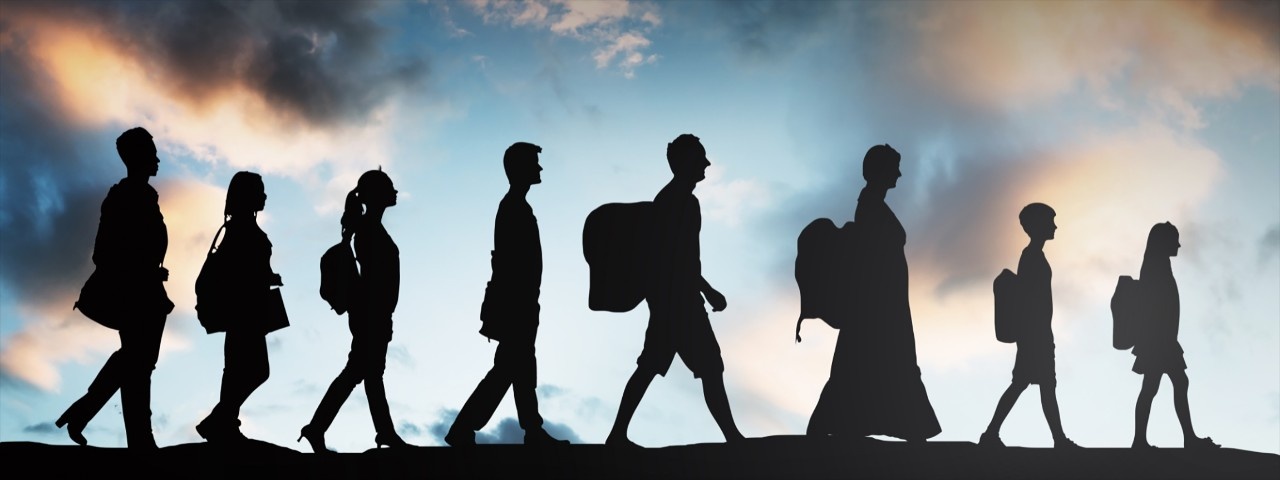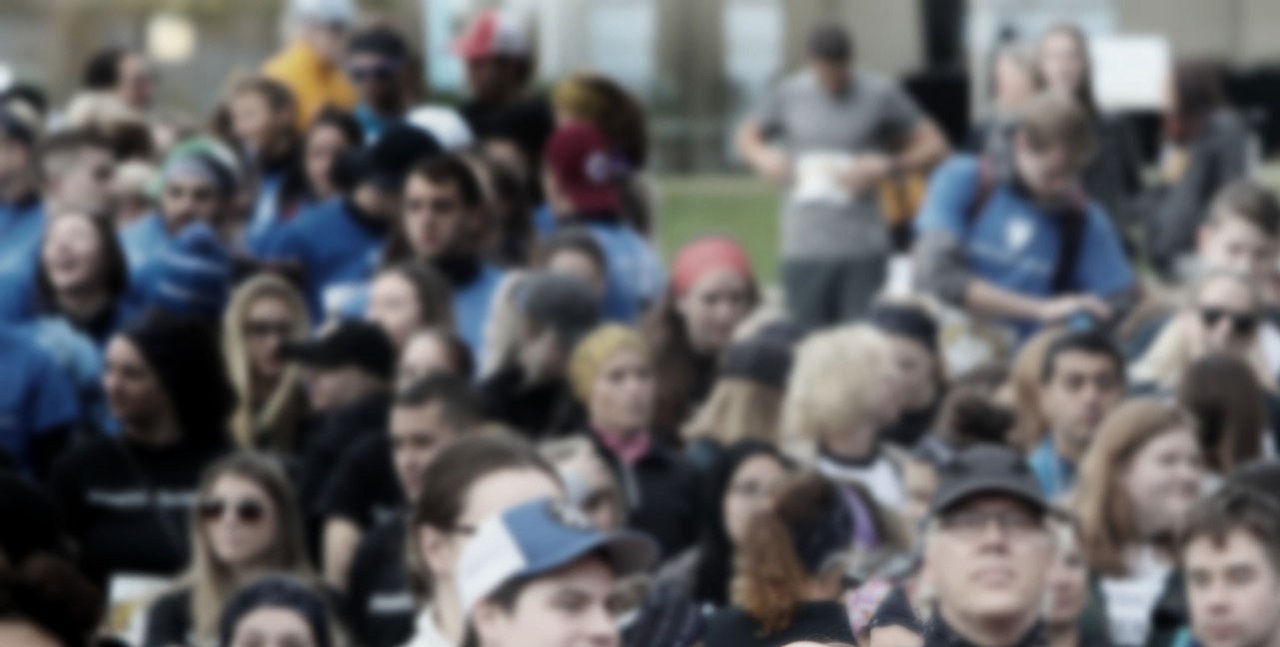Research Feature
Building Bridges Between Old and New Lives - Considering the Role of Occupational Therapy Amidst Global Migration
Lil Crump with Sara Abdo

Forced displacement is a reality for over 108 million people who find themselves uprooted from their homes due to persecution, conflict, human rights violations, and the impacts of climate change, along with many other reasons[1]. Since 2022, the number of people forcibly displaced continues to grow. Supporting people who have resettled in other lands, preventing, and attending to the contexts leading to forced displacement, is a challenge in need of everyone’s attention.
Occupational Scientists (OS) and Occupational Therapists (OT) are concerned with how people spend their time and how their activities connect to their health and wellbeing, contribute to their sense of meaning, and provide means of connecting with others and land [2]. Rooted in understanding what promotes participation in such occupations, the two fields work to prompt occupational justice. Examining the cultural, social, and political conditions that restrict what people are able to do, OTs and OSs are well positioned to fulfil the rights of people with forced migrant experiences – the rights to participate in occupations of survival, those that are meaningful, and attend to their own or community wellbeing [3]. OTs and OS can, and do uplift the stories of the forcibly displaced, challenge current discourse on migration rights, and support those during their resettlement process.
Why is migration research necessary?
In a recent dialogic session, a team of researchers and practitioners discussed how theory, research, and practice in occupational therapy and occupational science inform one another. Their article, Global Perspectives on Migration and Forced Displacement [4], showcases how OTs and OSs come together to challenge and enhance current discourse on migration within the profession and engage in ethical and collaborative research.
This type of research helps inform allied healthcare providers on their potential role in the resettlement of people with forced migrant experience, and in addressing the social and political circumstances that lead to forced migration. Migration research in OS and OT can ensure that the theories of the professions are relevant and exhaustive, that the work being done in migration is ethically and morally aligned with occupational wellbeing, and that the practical knowledge and skills needed to provide support are accessible and available to those on the front line[5]. In fact, migration research is what facilitated Sara Abdo’s work within the local community. Today, Sara collaborates with people with forced migrant experiences and colleagues in healthcare, resettlement, and education to guide policies, practices and processes within the healthcare, education, and resettlement sectors.
Working alongside forcibly displaced families comes with plenty of challenges. There is limited funding and research supporting occupational practice in forced migration, frustrations of siloed political, economic, social and health systems, white benevolence, and the list continues.
Why do it?
"Because at the end of the day, we are all interconnected," says School Instructor Sara Abdo. "Witnessing how people with forced migrant experiences remind others of our shared humanity makes the work so worthwhile." Other rewards cited by the research working group Sara is involved with include witnessing moments of joy, seeing law, health, and education systems authentically and consistently following the leadership of a family with forced migration experience and seeing advocacy work enact change within federal programs for healthcare coverage.
The impacts of forced migration extend far beyond those who have directly experienced it. A multidisciplinary approach guided by those with forced migration experience is required to appreciate, understand and address forced migration. Our humanity is interrelated—it is our responsibility as global citizens to care and to act.
Research of this nature helps assist people who have resettled to another land during the forced migration context and informs those working with children and youth experiencing intergenerational harms caused by forced migration. Lack of OT research supporting OT practice within the resettlement of forced migrants limits the effectiveness of OT impact in this area. Working with forced migrants fall very well within OTs scope of practice – research and practice examples are growing.
How can occupational therapists be involved in migration work?
Occupational therapists can hold so many roles in migration work. Whether they are a manager, a care coordinator, researchers or educator, OTs connect people with forced migration experiences, advocate for justice [6] and connect them to occupation and opportunities in a new land [7] OTs are:
- Providing psycho-social interventions to children [8]
- Developing educational materials on working with interpreters, attending to disability services navigation and the common access to barriers experienced by people with forced migrant experiences [9]
- Supporting people processing trauma through meaningful occupation
- Reconnecting people to their community through traditional dance [10]
- Developing the role for primary care through student-Run occupational therapy programs at the Newcomer Health Clinic
- Capturing the stories and daily forms of resistance of people who live under the oppression [11]
- Advocate for fair, and equitable migration policies, and resettlement practices
Raise awareness and advocate for sustainable planetary health to prevent forced displacement caused by natural disasters
And so much more!
If you are looking to learn more about working with people who have forced migration experiences, there are plenty of resources out there!
Networks & Resources for Occupational Therapists/Occupational Scientists:
- Occupational Justice for Newcomer Network
- WFOT Resource Manual: Occupational Therapy for Displaced Persons
- WFOT Learning Courses (Login required)
-Disaster Management
-Working with Displaced Person
-Resettling Climate Migrants
Resources for All
CMHA Immigrant and Refugee Mental Health Project
Interdisciplinary Cooperation in Psychosocial Interventions: A case study on refugees
_________________
1 The United Nation High Commissioner for Refugees (UNHCR)(2022). Global Trends: Forced Displacement in 2022. https://www.unhcr.org/sites/default/files/2023-06/global-trends-report-2022.pdf
2 OT Australia, 2015; WFOT, 2012;
3 World Federation of Occupational Therapists. (2019). Position Statement: Occupational Therapy and Human Rights. https://wfot.org/resources/occupational-therapy-and-human-rights
4 Trimboli et al. (2023). Global perspectives on migration and forced displacement: Theory, research, and practices for enacting an occupation-based approach. https://doi-org.ezproxy.library.dal.ca/10.1080/14427591.2023.2246980
5 Trimboli et al. (2023). Global perspectives on migration and forced displacement: Theory, research, and practices for enacting an occupation-based approach. https://doi-org.ezproxy.library.dal.ca/10.1080/14427591.2023.2246980
6 Krishnakumaran, T., Bhatt, M., Kiriazis, K., & Giddings, C. E. (2022). Exploring the Role of Occupational Therapy and Forced Migration in Canada. Canadian Journal of Occupational Therapy, 89(3), 238–248. https://doi.org/10.1177/00084174221084463
7 Blankvoort, N., Arslan, M., Tonoyan, A., Damour, A. Q., & Mpabanzi, L. (2018). A new you: A collaborative exploration of occupational therapy's role with refugees. World Federation of Occupational Therapists Bulletin, 74(2), 92–98. https://doi-org.ezproxy.library.dal.ca/10.1080/14473828.2018.1526560
8 Trimboli, C., Fleay, C., Parsons, L., & Buchanan, A. (2023). Occupational Therapy Psychosocial Interventions for Middle-Childhood Aged Refugee Children in High Income Countries: Focus Group Perspectives. Occupational Therapy in Mental Health, ahead-of-print, 1–27. https://doi.org/10.1080/0164212X.2023.2181911
9 Amjed, K., Dumlao, K., Ghahari, S. (2023). Supporting newcomers and refugees: How to get started, OT Start-up Manual, Common Barriers in Access to Healthcare. Version 1.0. Queen's University, Kingston ON, Canada.
9 Dumlao, K., Amjed, K., Ghahari, S. (2023). Supporting newcomers and refugees: How to get started, OT Start-up Manual, Working with an Interpreter. Version 1.0. Queen's University, Kingston ON, Canada.
9 Amjed, K., Dumlao, K., Arif, A., Subhani, A., Ghahari, S. (2023). Supporting newcomers and refugees: How to get started, OT Start-up Manual, Supporting Daily Occupations. Version 1.0. Queen's University, Kingston ON, Canada.
10 Smith, Y. J. (2018). Traditional dance as a vehicle for identity construction and social engagement after forced migration. Societies, 8(3), 1–10. https://doi-org.ezproxy.library.dal.ca/10.3390/soc8030067 https://www.mdpi.com/2075-4698/8/3/67
11 Simaan. (2017). Olive growing in Palestine: A decolonial ethnographic study of collective daily-forms-of-resistance. Journal of Occupational Science, 24(4), 510–523. https://doi.org/10.1080/14427591.2017.1378119
